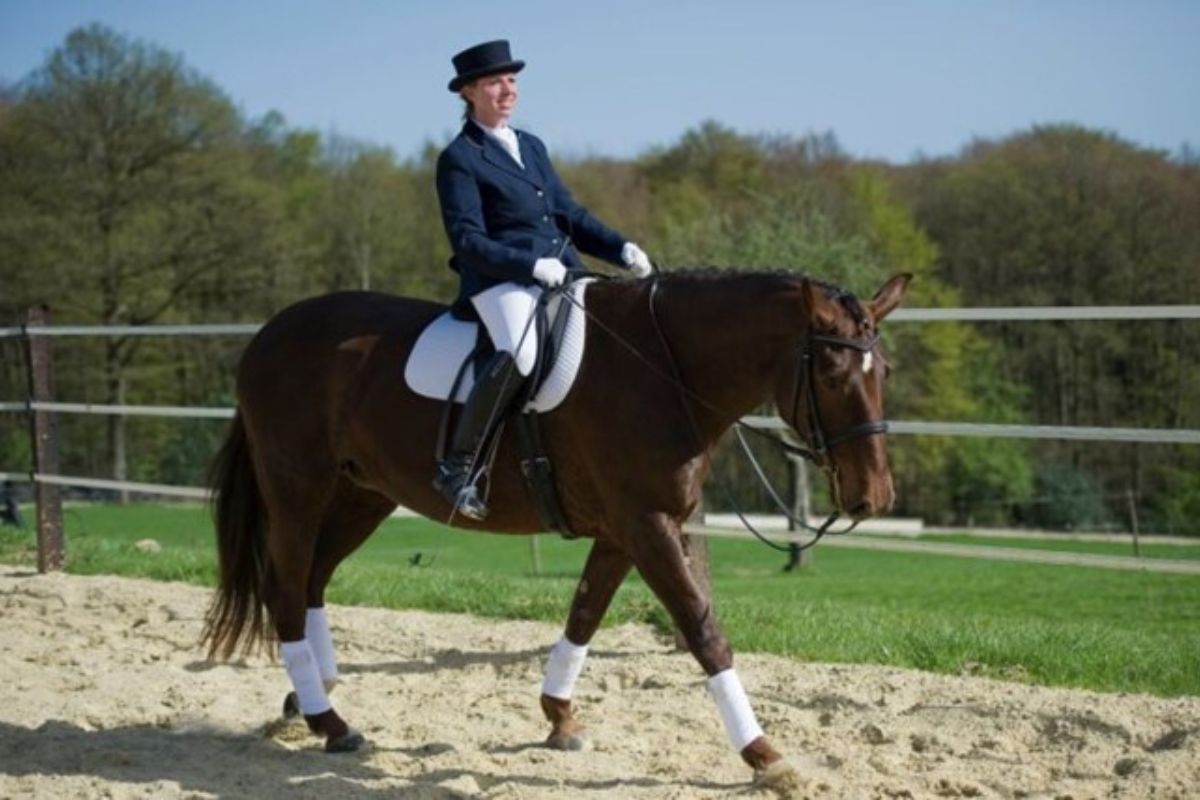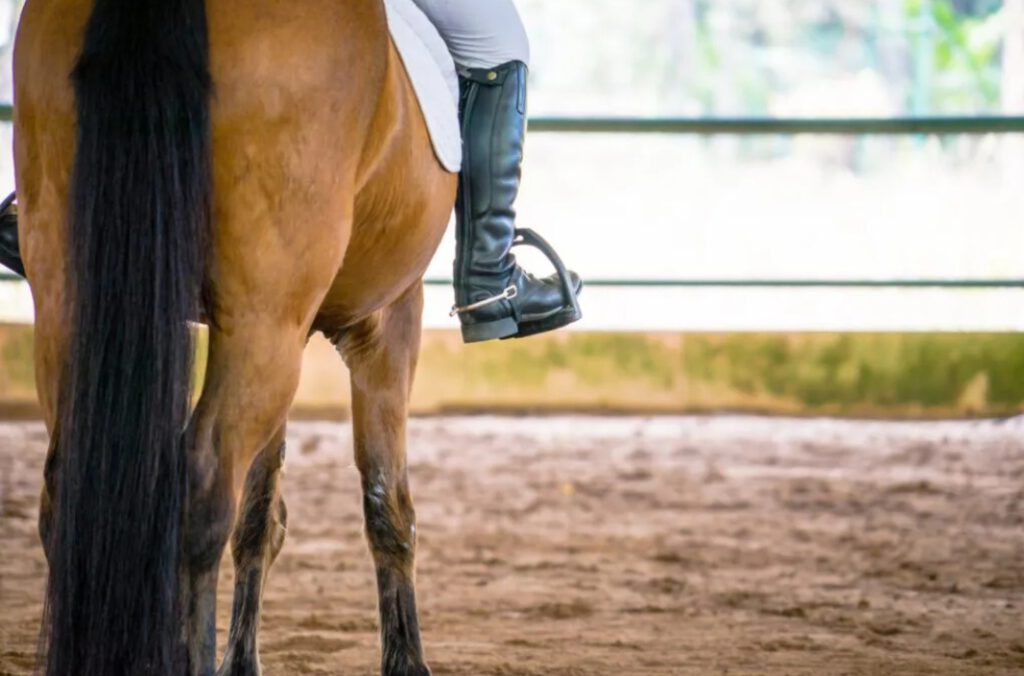Menu

Body awareness. Probably the most important word when talking about the rider's lineup and impact on the horse. The way you use the different parts of your body independently is absolutely crucial to how your horse understands you. And the stronger and more stable and agile you are in your biomechanics, the more accurately and positively you can impact your horse.
You may also like to read: Riders first aid: How to treat your wounds and blisters
Some people are kind of born with more body awareness than others. But for the most part – if you focus and work at it you can practice and finally end up with a better body awareness. The surest way to a correct posture and impact is to "be your own teacher". The more you remind yourself that you need to remember to do the things below. The faster it will become part of your natural way of riding. It might actually one day in the near future feel just as natural as stepping on the pedals of a bicycle. If only you practice enough.
If you want to sit perfectly in the saddle, then your shoulder, hip and heel should create a vertical, straight line along your body. Imagine if your horse was suddenly torn away from underneath you. Then you should be able to land in complete balance on your feet. You should not feel that you are about to fall forwards or backwards.
For your seat and thighs to properly impact your horse, the space between your femur (thighbone) and the horse's horizontal topline should form an angle of about 45 degrees. If the angle is much larger or smaller than that, it is a sign that your sturupps are either too short or too long.
"Sit back" is probably one of the most used phrases among riding instructors. And it is makes sense. Because the horse must have its balance point in the back part of its body, so that it can walk correctly on the hindquarters. Often, however, the sentence is misunderstood by the rider. We mistakenly think it is about leaning back as far as possible at all. But it is not so. The idea is that you should put the weight back enough that you are sitting exactly above the horse's own balance point. So that your two balance points "melt together". When they do, the work for both you and the horse becomes much easier. And you get a better chance at using your body awareness.
Countless times we have heard that it is important to sit heavily in the saddle - and it is true. But we should not sit heavier than we still feel we are easily floating with the horse’s movements. However, some riders also find it too easy to sit in the saddle. They have difficulty using their weight as a mean to affect the horse. The correct middle way can be found if you imagine this. You must have glue in the buttocks so that you stay well down in the saddle. At the same time, you must have a string at the top of the helmet, which pulls one upwards. This way you remember to maintain the lightness that should make it possible to follow the horse's movements.

In order for the horse to walk straight and be even on both reins, it is important that you also sit straight. You only do this if you distribute your weight evenly between your two seat bones. One way to find out if you are doing it right is this. Place two bathroom scales next to each other and putting one foot on each. If one weight shows a significantly higher number than the other, you can be pretty sure that you have tendency to sitt crooked. It's perfectly normal, and fortunately it's workable.
We can all agree that it is best if you are able to relax rather than being all tensed. At the same time, though it is important not relax more too much. Cause then we might forget to use our muscles - that is, the right muscles. This is where body awareness really comes into play. It is about being able to use the muscles that are necessary to be able to maintain a good posture in the saddle. And at the same time be able to relax the rest of the body. One of the most difficult things for many riders is to use the lumbar and abdominal muscles. Without getting too tense in the shoulders.
It sounds trivial, but when working on body awareness, this is really very important. Because if you do not use pressure in the stir ups, very likely everything that should not happen – will happen. You fall forward, you lose your weight in the saddle. You lose your balance. And then you let go of some of the muscles that otherwise should help you sit firmly placed in the saddle. Most importantly, you will lose the pressure in the stir ups. You need that to make good, half halts through your weight and your legs. If you let go of the pressure in the stir ups, you will inevitably have put more weight in your hands. And your (now incorrect) half halts will pass through the reins. Offten with the effect that the horse just grab the bit even more and maybe even try to dive downward.
Although it is important to step well in the stir ups, you should always have more weight in the thighs than in the feet. You do not want to feel that you are only holding the horse with your weight. Your legs also need to be at work. A good interaction between stepping on the stir ups and "holding" the horse with the thighs, while riding forward with your thighs, is important. And yes, it really does require body awareness! So, it all comes down to getting started. The best way to learn is by being your own teacher. That way you can constantly remind yourself of what needs to be done.
Psychomotor Therapists Copenhagen: Body Consciousness
Happy equipages: 5 effects of rider training that you feel in your riding